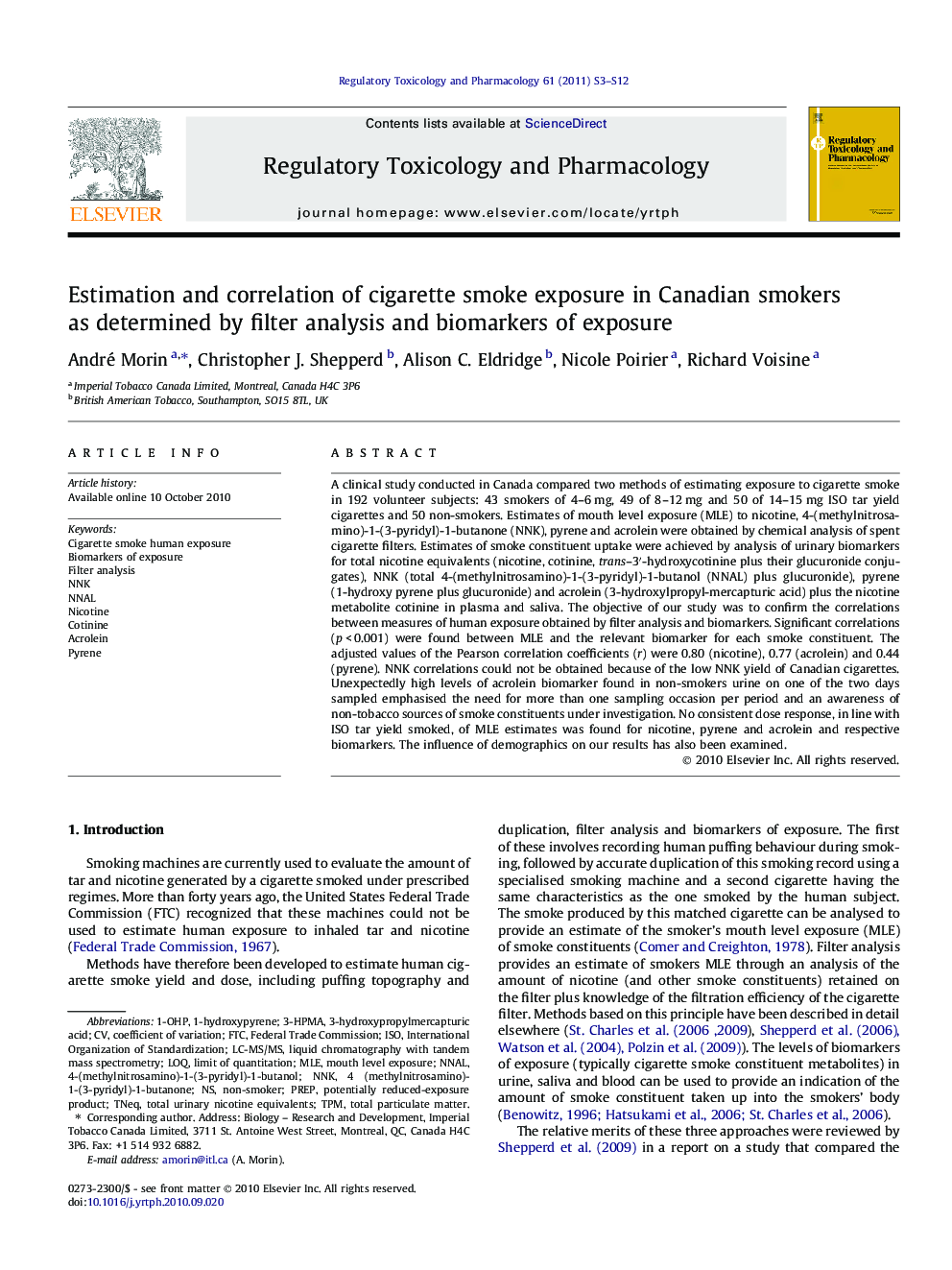| Article ID | Journal | Published Year | Pages | File Type |
|---|---|---|---|---|
| 5857478 | Regulatory Toxicology and Pharmacology | 2011 | 10 Pages |
Abstract
A clinical study conducted in Canada compared two methods of estimating exposure to cigarette smoke in 192 volunteer subjects: 43 smokers of 4-6 mg, 49 of 8-12 mg and 50 of 14-15 mg ISO tar yield cigarettes and 50 non-smokers. Estimates of mouth level exposure (MLE) to nicotine, 4-(methylnitrosamino)-1-(3-pyridyl)-1-butanone (NNK), pyrene and acrolein were obtained by chemical analysis of spent cigarette filters. Estimates of smoke constituent uptake were achieved by analysis of urinary biomarkers for total nicotine equivalents (nicotine, cotinine, trans-3â²-hydroxycotinine plus their glucuronide conjugates), NNK (total 4-(methylnitrosamino)-1-(3-pyridyl)-1-butanol (NNAL) plus glucuronide), pyrene (1-hydroxy pyrene plus glucuronide) and acrolein (3-hydroxylpropyl-mercapturic acid) plus the nicotine metabolite cotinine in plasma and saliva. The objective of our study was to confirm the correlations between measures of human exposure obtained by filter analysis and biomarkers. Significant correlations (p < 0.001) were found between MLE and the relevant biomarker for each smoke constituent. The adjusted values of the Pearson correlation coefficients (r) were 0.80 (nicotine), 0.77 (acrolein) and 0.44 (pyrene). NNK correlations could not be obtained because of the low NNK yield of Canadian cigarettes. Unexpectedly high levels of acrolein biomarker found in non-smokers urine on one of the two days sampled emphasised the need for more than one sampling occasion per period and an awareness of non-tobacco sources of smoke constituents under investigation. No consistent dose response, in line with ISO tar yield smoked, of MLE estimates was found for nicotine, pyrene and acrolein and respective biomarkers. The influence of demographics on our results has also been examined.
Keywords
LOQNNKNNALPrEPTPM1-OHPFTC3-hydroxypropylmercapturic acidMLE3-HPMA1-hydroxypyrene4-(methylnitrosamino)-1-(3-pyridyl)-1-butanolLC-MS/MSAcroleinISObiomarkers of exposureFilter analysistotal particulate matterCoefficient of VariationNon-smokermouth level exposurelimit of quantitationNicotinePyreneLiquid chromatography with tandem mass spectrometryFederal Trade CommissionCotinine
Related Topics
Life Sciences
Environmental Science
Health, Toxicology and Mutagenesis
Authors
André Morin, Christopher J. Shepperd, Alison C. Eldridge, Nicole Poirier, Richard Voisine,
